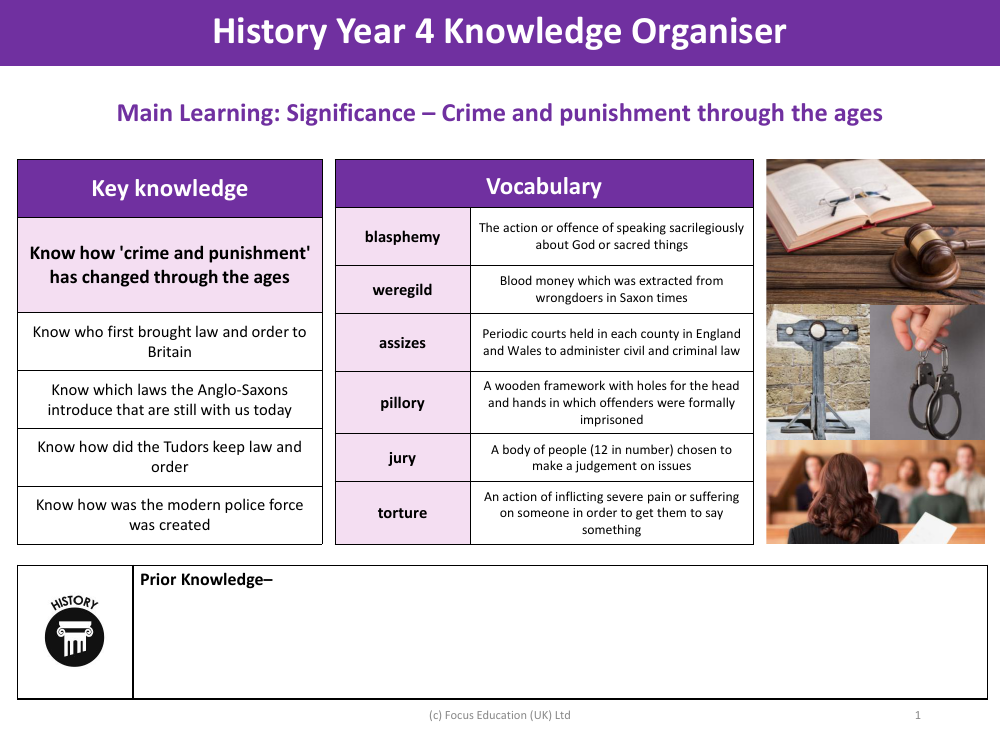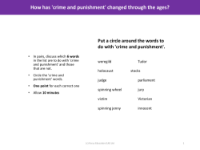Knowledge organiser - Crime and Punishment - Year 5

History Resource Description
The 'Crime and Punishment' knowledge organiser for Year 5 serves as a crucial educational tool, outlining the essential vocabulary and key knowledge required to understand the historical evolution of legal systems. The vocabulary section introduces terms such as 'blasphemy', which refers to the act of speaking disrespectfully about divine entities or holy matters. It also includes 'weregild', a term from Saxon times denoting blood money paid by offenders, and 'assizes', which were periodic courts held across counties in England and Wales for administering justice. Students learn about the 'pillory', a device used to publicly humiliate wrongdoers, and the concept of a 'jury', comprised of 12 individuals tasked with delivering a verdict in legal cases. The term 'torture' is also explained as the infliction of extreme pain to extract information or confessions.
On the knowledge front, the organiser aims to enlighten students on the historical progression of 'crime and punishment'. It covers the origins of law and order in Britain, the enduring legal contributions of the Anglo-Saxons, and the methods employed by the Tudors to maintain control and justice. Additionally, the organiser touches upon the inception of the modern police force. This educational resource builds upon the foundation laid in Year 4, where the main learning focus is on the significance of crime and punishment through various historical periods, setting the stage for a deeper understanding of the subject in Year 5.










